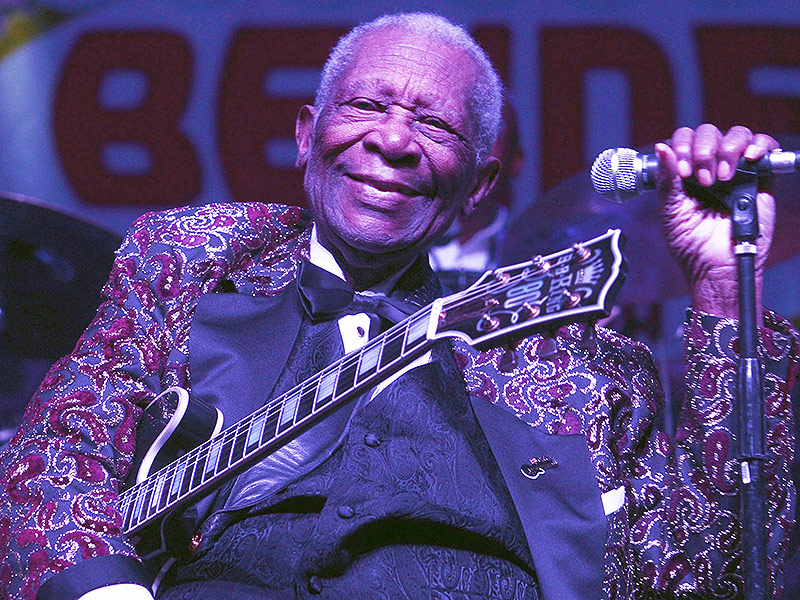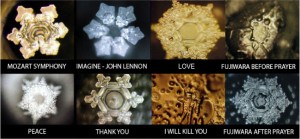May 8, 2015 | 1:02 PM | Richard Knox
Ringing In Your Ears? Finally, Researchers Finding New Clues About Tinnitus

Alan Starr, an audio engineer, has tinnitus as a result of the Boston Marathon bombing. (Courtesy of Alan Starr)
By Richard Knox
Alan Starr remembers being blown back by the bomb’s force. He had come to watch a friend cross the Boston Marathon finish line on that fateful April day.
Starr, a 52-year-old audio engineer who makes his living by his ears, suffered no visible injury. But, like at least 70 other marathon bombing victims, he’s left with a never-ending reminder of that moment — a death knell that never stops ringing in his head.
“It’s a very high pitch like a whistle,” he says. “It doesn’t waver. It’s just constant, 24/7.”
It’s called tinnitus, and it’s beginning to get the attention it deserves.
Nearly a million veterans suffer from tinnitus.
This is partly due to the Boston Marathon bombings. Starr and a few dozen other bombing victims are participating in studies supported by the One Fund, created to help bombing victims, that are aimed at devising an effective treatment.
An even more powerful driver of tinnitus research is the enormous incidence of the problem among Iraq and Afghanistan war veterans who’ve suffered blast damage. Nearly a million veterans suffer from tinnitus. That makes it the leading service-related disability — far outstripping PTSD.
And tinnitus — most often pronounced TIN-uh-tiss — is surprisingly common in the general population. At least one in every six Americans suffers from tinnitus — around 50 million people. Of these, the condition is “burdensome” for 20 million, according to the American Tinnitus Foundation. Two million of them have severe, disabling tinnitus, often accompanied by depression.
The problem has no cure and no very effective treatment. But after decades of dead-end research, scientists are beginning to figure out what causes the constant ringing, whistling, whooshing or hissing that makes sufferers feel trapped inside their own heads.
New research is providing some surprising clues.
The conventional theory is that tinnitus is the brain’s response to damage of the tiny hair cells in the inner ear. These delicate sensors translate air pressure on the eardrum, caused by sound waves, into nerve signals. The “hearing” centers of the brain interpret these signals as perceived sound.
Scientists have thought that tinnitus occurs when the auditory brain centers try to fill in the gaps caused by this hair-cell damage by creating phantom sounds. It’s like the phantom pain that follows amputation of a limb.
But this theory of tinnitus “might not be entirely correct,” says Phillip Gander of the University of Iowa. “We think it’s wrong, basically.”
A new report’s findings suggest that tinnitus is more complicated than scientists thought.
Gander is an author of a new report in the journal Current Biology that challenges conventional thinking.
The findings suggest that tinnitus is more complicated than scientists thought. It might not stem simply from an isolated defect in the auditory cortex, the part of the brain that perceives sound.
“We found essentially that almost all the hearing parts of the brain are involved,” Gander says, “plus a number of other areas of the brain related to processing emotion and memory and attention.”
The Signature Of Tinnitus
In essence, the researchers have discovered the signature of tinnitus — at least in the case of one Iowa man who has suffered from tinnitus for years, probably from recreational gun use.
This 50-year-old man gave researchers a rare opportunity: the ability to record his brain waves from a wide network of electrodes implanted directly into his brain.
That was only possible because he suffered from severe epilepsy. When medication no longer worked for him, his only option was surgery to selectively destroy the brain cells that were kindling his seizures.
To do this, doctors had to cut a four-inch hole in his skull to implant electrodes. That enabled them to pinpoint the seizure-causing cells.
After the surgery, the patient’s seizures disappeared. But before the surgery, he agreed to let Gander and his colleagues use the electrodes to eavesdrop on his brain.
To identify the neuronal signature of tinnitus, they needed to turn it off — or at least turn down the volume of the phantom sound. They did that by playing a loud sound. Researchers have long known this can temporarily suppress tinnitus.
By monitoring the patient’s brain waves while his tinnitus was active or silenced, they could identify the brain waves associated with his tinnitus.
“That’s why our paper is a big deal for scientists,” Gander says. “We’re able to say what is specific to the tinnitus itself, as opposed to the distress or lapses of attention they might have because of their tinnitus.”
Interestingly, even though multiple areas of the Iowa man’s brain are involved, he has only mild tinnitus. So the severity of tinnitus doesn’t necessarily reflect the extent of brain involvement.
The new evidence is only from a single patient, so Gander says it needs to be interpreted cautiously. He’s currently studying a second epilepsy patient with tinnitus, and is trying to find more. Meanwhile, he hopes researchers can validate the findings in animals with an experimental form of tinnitus.
But the discovery that tinnitus can involve many areas of the brain is not especially good news.
“Maybe the reason tinnitus is so treatment-resistant,” Gander says, “is because it’s involved with so many parts of the brain. So any sort of treatment might not be able to knock out one area of that system. You might have to target all of them, which might be very difficult.”
Remolding The Brain
But Daniel Polley thinks it’s possible. He’s a neuroscientist at the Massachusetts Eye and Ear Infirmary who specializes in “neural plasticity” — the ability of brain activity to be remolded.
He thinks the abnormal tinnitus-associated brain waves found in the Iowa patient are fixable by using sound to retrain the brain.
Starr, the tinnitus sufferer we met earlier, is among a dozen or so Boston bombing victims in a study that Polley and his colleagues hope will show how to “bring those aberrant brain rhythms back into a normal register.”
They’re using two approaches: music therapy and a game that employs audio as well as video.
In both, the first step is to identify the pitch or frequency of the phantom tone in each research subject’s own tinnitus.
In the audio game, subjects use a pad computer and headphones. Their task is to identify hidden objects on the screen using only audio feedback.
The game is structured so the tones close to the subject’s own tinnitus don’t help win the game.
“Things that resemble the sound of their tinnitus are the villains,” Polley explains. “What we try to do is train people to suppress this unwanted sound and build up the representation of nearby sound frequencies — to sort of strengthen their ability to discriminate between them.”
In music therapy, subjects listen to music of their choice that has been filtered to remove their tinnitus tone. Polley says that does two things. First, it calms the region of the brain overstimulated by that particular tone.

Dan Polley’s research laboratory at Mass. Eye and Ear focuses on the mechanisms that allows auditory processing centers in the brain to recover function after damage to the cochlea. Here, Dr. Polley adjusts the setting on equipment that allows him to stimulate key regions of the brain and measure neural activity. (Courtesy of Eric Antoniou/Mass Eye and Ear Infirmary)
Polley says the brain is sort of like a piano keyboard. Neurons in the auditory center are arranged like the strings inside a piano.
On a piano, striking a particular key causes a corresponding string to vibrate. Just so, when the ear picks up a particular tone in the environment, the corresponding brain region is stimulated. In a tinnitus patient, neural activity in the region for a particular tone, or range of tones, “is often disorganized and hyperactive,” Polley says.
“By avoiding a certain range of frequencies in the brain’s ‘keyboard,’ those at the edge of those that are filtered out have an advantage,” he says. “They frequently can come to take over the region of the disorganized region of the piano keyboard — to fill in, so to speak.”
That, in a phrase, is brain plasticity.
Polley thinks music is an ideal vehicle for tinnitus therapy because “it’s not just sound but it’s something special and personal.”
That dovetails with the Iowa research showing the abnormal brain waves of tinnitus reach into areas involved with emotion, attention and memory.
Sound Therapy
“These are areas that synthesize chemicals that open the floodgates for brain plasticity,” Polley says. “We need those brain areas to be turned on. Some arbitrary sound won’t do it, we need it to be imbued with meaning.”
The approach is based on prior research. In fact, there’s already an app that “notches out” the pitches in music represented by a user’s tinnitus tones. The Harvard group hopes to fine-tune this approach and show that it works in a broad range of tinnitus sufferers.
If they succeed, Polley thinks they’ll find that tinnitus sufferers will have to keep practicing the game or music therapy or whatever is shown to work, or the effect will fade. “That’s the way it is with my body in the gym, unfortunately, and in practicing any type of skill.”
An effective treatment might also prevent tinnitus from getting worse with age, as normal hearing loss occurs.
Polley himself hopes to benefit from his research. “I’ve got a high-frequency tinnitus, mostly lateralized to my right ear,” he says, caused, he thinks, by “too many years of commuting with headphones on at high volume.”
Full disclosure: I hope to benefit too. My tinnitus was probably caused by pressure from a middle-ear infection years ago that blew out my right eardrum.
Since music is terrifically important to me — performing it, listening to it — I might just volunteer for Polley’s study, if he’s able to get funding to expand beyond the afflicted marathon bombing victims.







